SANTA COMBA DE BANDE
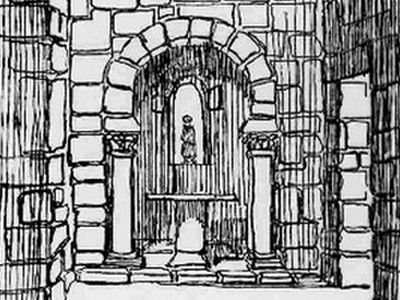
Previous notes
- Fue declarada Monumento Nacional por Real Decreto de 11 de Agosto de 1.921.
- De origen visigodo, fue restaurada en el año 872 por orden de Alfonso III, según consta en un documento del monasterio de Celanova.
- A partir de entonces ha sufrido múltiples modificaciones, aunque el estudio de paramentos dirigido por L. Caballero demuestra que todo el interior de la iglesia, incluidas las bóvedas, pertenece a la construcción original.
- Fue restaurada hacia 1930 por A. Ferrant y en los últimos años se ha sustituido la teja tradicional que la cubría por otra moderna que modifica negativamente su aspecto.
Historic environment
Probably this church is the most important link still preserved to be able to study all the Visigothic architecture of the 7th century. From a Celanovas’ chartulary diploma we know that it was offered to Odoymo to repopulate it in 872 mentioning that it already existed two hundred years ago, which would indicate the year 675 as an approximate building date
Description
Very well preserved and without any important modifications regarding its original design, this church inlaid in a rectangle of 12 by 18 meters, had the shape of a Greek cross, to which an apse was added  to its east side and a portico to its west side, practically symetrical. Above the crossing of the two naves there is a lantern covered by by a four pitched roof, with a window at each side, placed upon the gabled roof that cover the naves.
to its east side and a portico to its west side, practically symetrical. Above the crossing of the two naves there is a lantern covered by by a four pitched roof, with a window at each side, placed upon the gabled roof that cover the naves.
There is now a chamber in the northeast side with a flat roof that is a continuation of the northern nave, and the original portico that must have been of the same type of the one in San Juan de Baños has been replaced by one that has just one flat roof with two rounded arches, at the north and east respectively and a medieval belfry where the portico joins the western nave. Both addings are worse built than the rest of the construction and the joining plans between the original wall may be easily seen as well as the later additions.
The interior is of great simplicity and accurately defines the spirit of the Visigothic architecture of those times, that will become reflected in later constructions, like San Pedro de la Mata, Santa María de Melque, San Pedro de la Nave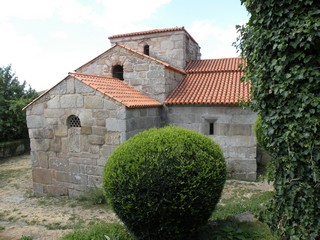 or Quintanilla de las Viñas. The naves have barrel vaults built in brick in the Roman style, similar to the western nave of San Fructuoso de Montelios and end in a central square in horse shoe arches. These arches, that end directly on the wall upon decorated shelves, meet in pairs in each corner in such a way that only two are complete whereas the other stem out in springers with them. The walls that support the dome stem out from over the arches, of a height approximately twice its width and with a window on each side covered by a raised groin vault, similar to the one in the mausoleum of Gala Placidia in Rávena, also made with big bricks in the Roman style that stem out from semi circles in the walls.
or Quintanilla de las Viñas. The naves have barrel vaults built in brick in the Roman style, similar to the western nave of San Fructuoso de Montelios and end in a central square in horse shoe arches. These arches, that end directly on the wall upon decorated shelves, meet in pairs in each corner in such a way that only two are complete whereas the other stem out in springers with them. The walls that support the dome stem out from over the arches, of a height approximately twice its width and with a window on each side covered by a raised groin vault, similar to the one in the mausoleum of Gala Placidia in Rávena, also made with big bricks in the Roman style that stem out from semi circles in the walls.
The apse is covered by a semi circular vault and separated from the rest of the church by a warhead arch with horse shoe shape, no key and extended in 2/7 of the radius upon imposts that continue along the wall and leaning, each one of them, in two 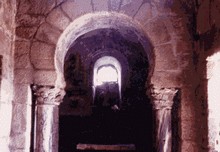 capitals upon columns placed parallel to the walls. Above the apse’s vault there is a small chamber that has access only by an interior window on the wall of the eastern nave, what will become quite usual in the later Asturian architecture. The capitals are of the same time as the church, with an unrefined technique and of different make: two of them are degenerated Corynthian type whereas the other two are different, one is of a compounded type and the other one is cubic Byzantine. The columns are in black marble, probably reutilized from another Roman construction of the zone.
capitals upon columns placed parallel to the walls. Above the apse’s vault there is a small chamber that has access only by an interior window on the wall of the eastern nave, what will become quite usual in the later Asturian architecture. The capitals are of the same time as the church, with an unrefined technique and of different make: two of them are degenerated Corynthian type whereas the other two are different, one is of a compounded type and the other one is cubic Byzantine. The columns are in black marble, probably reutilized from another Roman construction of the zone.
The rest of the decoration of the church consists of an impost that goes along the beginning of the apse’s vault and goes along its window, formed by a winding stem with bunches and leaves, of the same type than those in San Pedro de la Nave, wreathed courses in the naves at the level of the shelves of the crossing’s arch and other ones of the same type as their walls, above the end of the arches. It is interesting to highlight the lattice work of the apse’s window, formed by semi circles that ride ones upon the others. This drawing has been found in other rests of the Visigothic decoration, like a keel moulding from Córdoba in imposts of San Giao de Nazaré.
The design of the walls is based in big well engraved ashlars, as all the architecture of that period, although not with the perfection of San Fructuoso de Montelios, placed in horizontal courses that form a very solid structure as shown by its excellent state of conservation.
But the most important fact of this church is that we are in front of the first cruciform church in Visigothic architecture, if the chronology studied so far has not been completely mistaken. If, as we have seen, San Juan de Baños was built in 661 and represents a new trial of modification of the basilical plans that were being utilized until that moment, the same that we see in other previous ones like Cabeza de Griego or Recópolis, and San Fructuoso de Montelios was built little before the saint’s death that took place on April 16th 665, everything helps to understand that Santa Comba, a few years later than this one and located in the middle of an area of influence of the bishopry of Braga, was the definite finding with regard to the design of the plans that the Visigothic architects were after for more than a century.
if the chronology studied so far has not been completely mistaken. If, as we have seen, San Juan de Baños was built in 661 and represents a new trial of modification of the basilical plans that were being utilized until that moment, the same that we see in other previous ones like Cabeza de Griego or Recópolis, and San Fructuoso de Montelios was built little before the saint’s death that took place on April 16th 665, everything helps to understand that Santa Comba, a few years later than this one and located in the middle of an area of influence of the bishopry of Braga, was the definite finding with regard to the design of the plans that the Visigothic architects were after for more than a century.
In fact it seems that starting with the structure that San Fructuoso imported for his grave, imitating models from Rávena and Byzance, the same shape was adopted for the churches that were built later on, for which to the sketch of two crossed naves and the dome above the crossing it was onlty needed to add the major chapel, and in order to keep the simetry that was probably its main attractive, it was only necessary to add a portico on the opposite side with the same dimensions.
This fact was so important that, as modern research has shown, the model of Santa comba was absolutely followed in later built churches built later, like San Pedro de la Mata, probably built in the last years of the reign of Wamba (672-681), and the controversial Santa María de Melque, of uncertain date although considered as Mozarabic for many years, there are today few doubts that it was built prior to the Arabic invasion. In fact, the churches of Bande and Melque, so well preserved, are not only similar just by looking at them, but for the fact that is has been demosntrated that they correspond to the same plans, using for their construction different measuring units: the “Deunx” of around 30cm in the first case and the “Gubitus” of around 50cm in the second one. See on this matter the excellent information in the National Archeological Museum in Madrid. The same happens with San Pedro de La Mata, which measuring unit would be the “Palmitas” of around 41 cm, although in this case the poor state of conservation of its remains prevent us to know for certain whether the apse and the portico were like the two others or, as it seems to be, of the same height as the naves, in which case we would be before a clear precedent of San Pedro de la Nave.
What is unquestionable and utmost important is that in all  three the same design was used and that, except for a few details as the one mentioned or the placement of the doors in the aisles of the crossing of Mata, we can assure that Mata is a reprduction of Bande at a scale of 4/3 and Melque at a scale of 5/3.
three the same design was used and that, except for a few details as the one mentioned or the placement of the doors in the aisles of the crossing of Mata, we can assure that Mata is a reprduction of Bande at a scale of 4/3 and Melque at a scale of 5/3.
As an anecdotic detail we may add that its similarity with Montelios does not end in the shape of the plan but, as with that one, in Bande and in Melque, there is also a niche inlaid in the wall, located in the interior of the church in the Toledan one wheras in the Galician one it was in the exterior according to the custom in that period in the Galician-Portuguese region. This could be interpreted that they were built as funerary chapels, turned later into monastic churches by adding lateral chambers to the original structure.
A special mention deserves the controversial subject of those lateral chambers that are known to have existed in Santa Comba by the findings of the excavations. Those chambers, of which one still exists, were in almost all Visigothic churches of the 7th century, but there is a slight difference that might deserve a deeper study than the one we could achieve here: whereas in the churches that we have defined as cruciforms, among which Bande is possibly the first one, they appear as additions to the original construction, in the later ones, like Nave or Quintanilla de las Viñas and San Giao de Nazaré, they form part of the initial design. This could have been for the need created due to the importance of the monastic life by the end of the 7th century and beginnings of the 8th century that probably lead to a rethinking of the lithurgy and created the need for theses compartments, dedicated to the monks even the ones attached to the naves, and to the pilgrims the lateral ones to the portico, according to Gómez Moreno.
According to this consideration, the churches to which these compartments were added as a later change, would be prior to the existance of such need, whereas those that had it in their original design would have been built later.
It is obvious the need of a study in depth of the monastical life in those times and the relation between the cave churches and the first monastic constructions and their evolution.
Other interesting information
Access: Road N-540 to Celanova. Continue for 39,6Km until Bande. Continue 10Km until the village of Santa Comba.
GPS Coordinates: 41º 58′ 23,16″N 8º 0′ 7,52″W.
Information telephone: Ayuntamiento de Bande: 988.44.30.01. Visits: Marigel, 988.443.140 ó 675.182.344..
Bibliography
Historia de España de Menéndez Pidal: Tomo III.
SUMMA ARTIS: Tomo VIII.
L’Art Preroman Hispanique: ZODIAQUE.
Ars Hispanie: Tomo II.
Imagen del Arte Hispanovisigodo: Pedro de Palol.
Portals
Santa Comba de Bande
Santa Comba de Bande (Orense). Arquitetura e información escritaIgrexa /
Santa Comba de Bande.
Iglesia de Santa Comba de Bande.
2 thoughts on “SANTA COMBA DE BANDE”
Leave a Reply






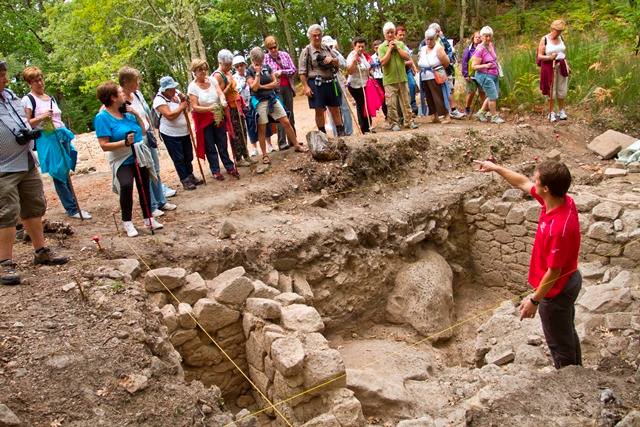
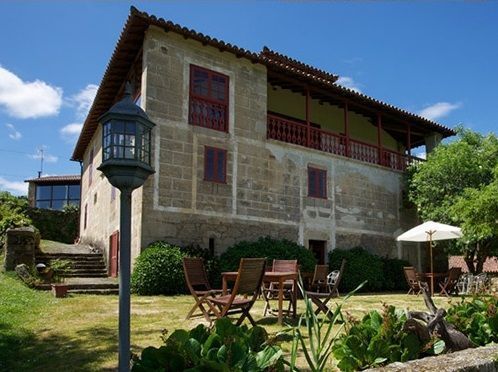
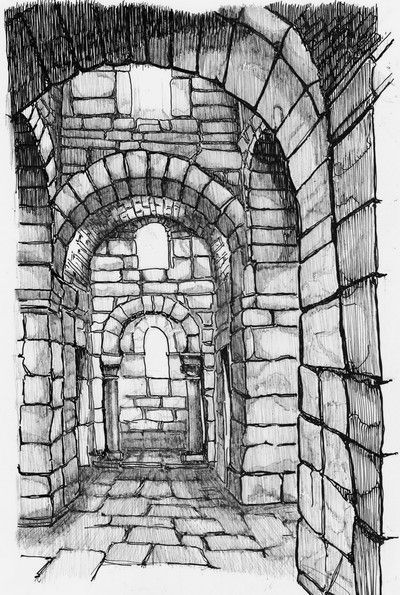
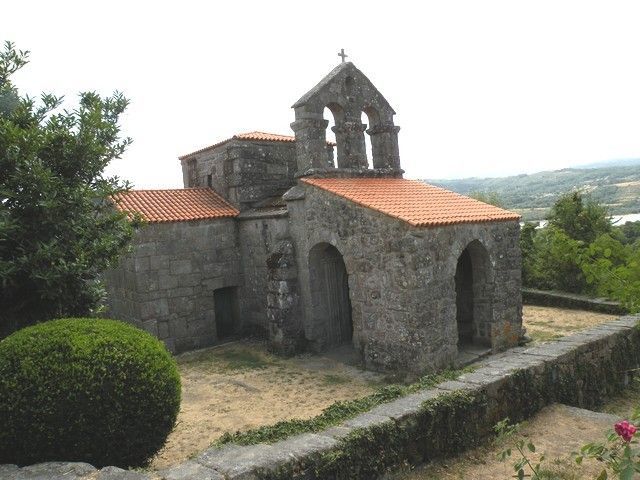
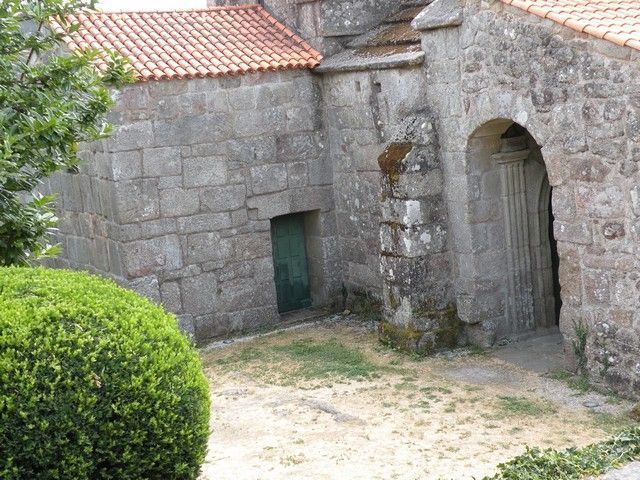
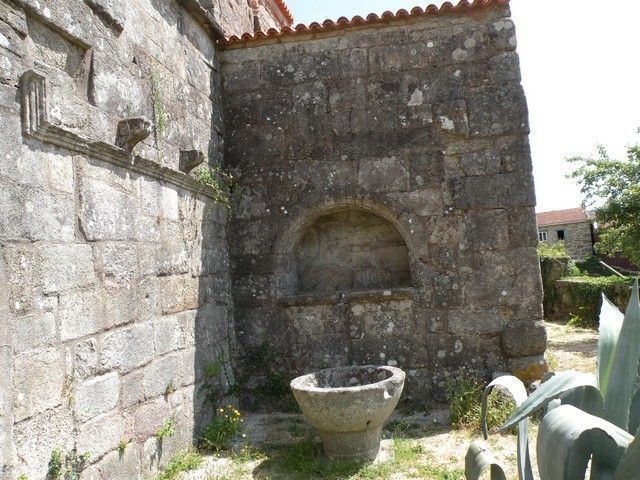
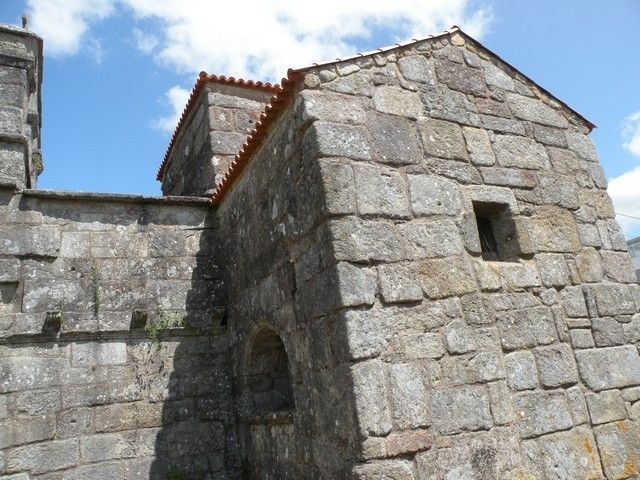
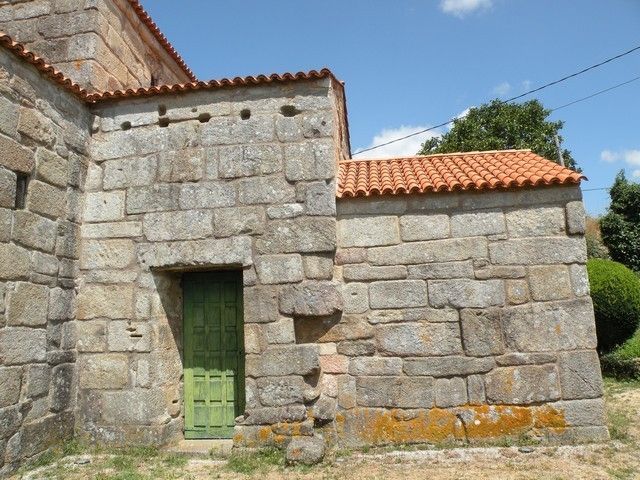
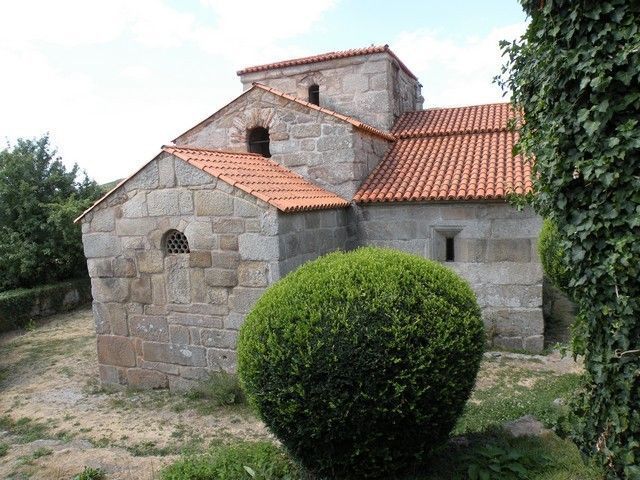
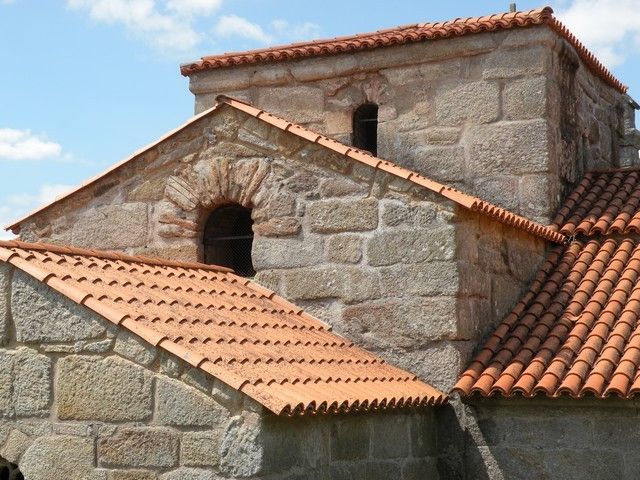
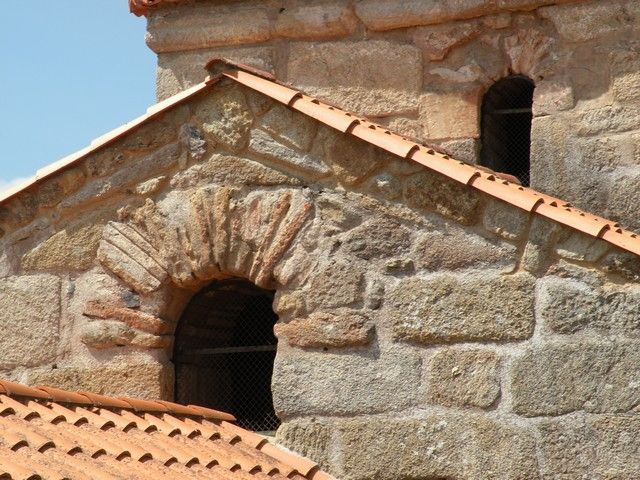
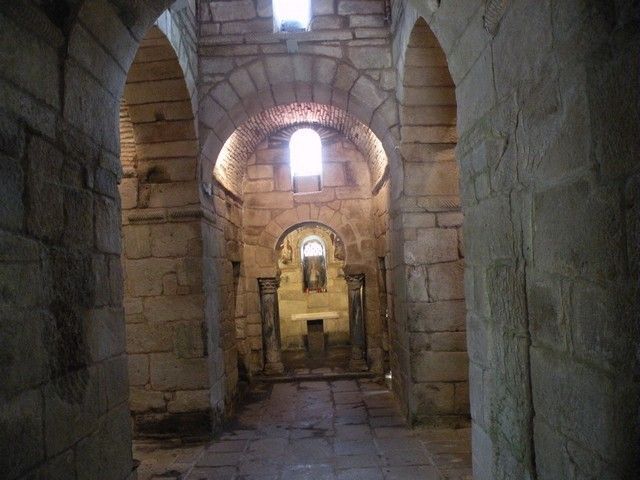
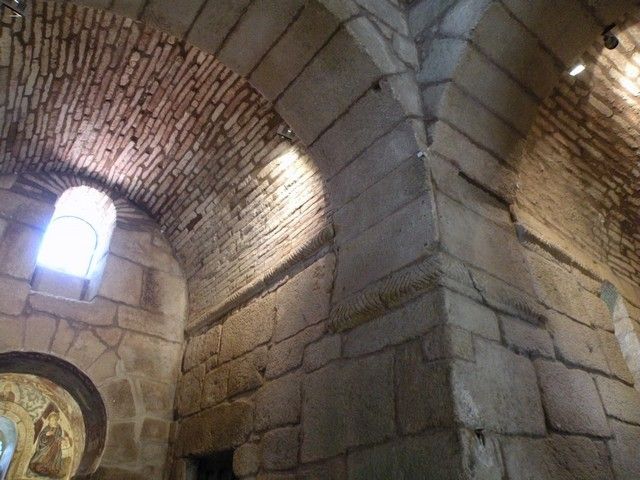
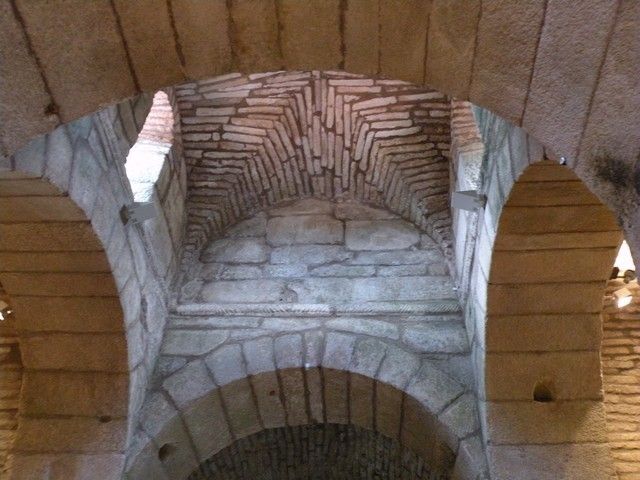
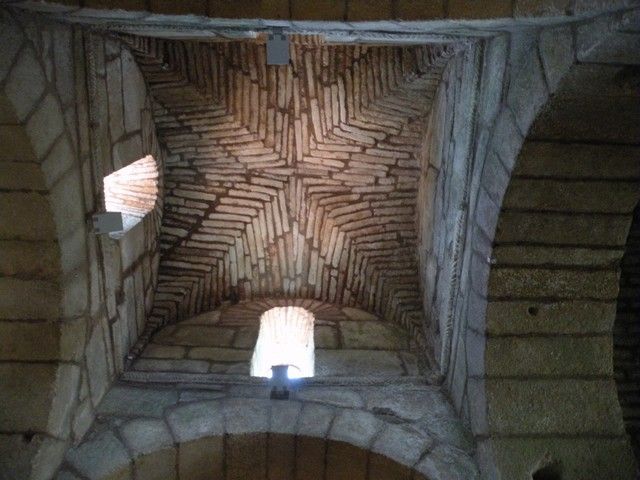
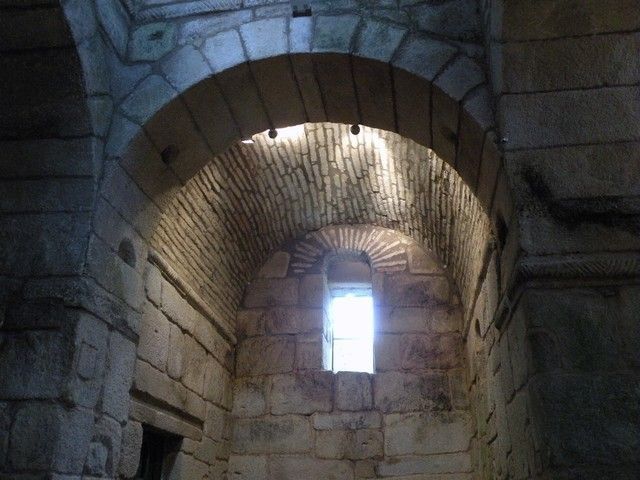
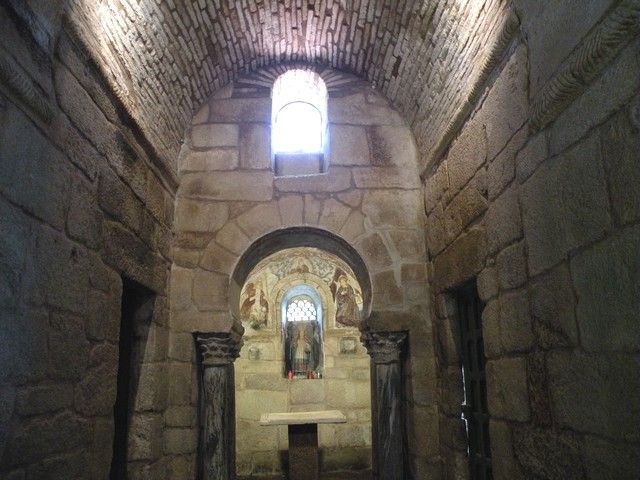
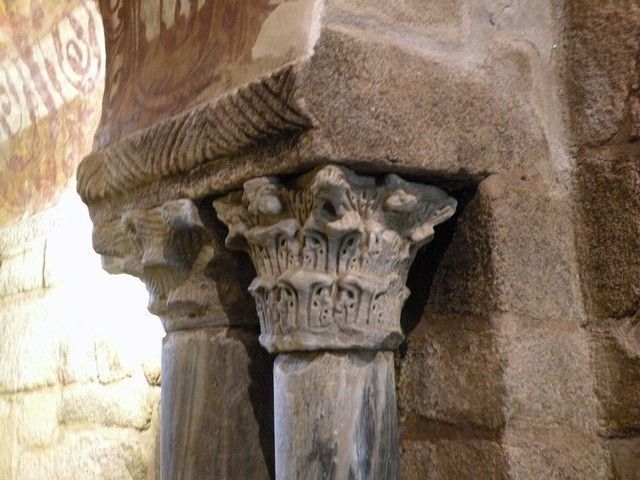
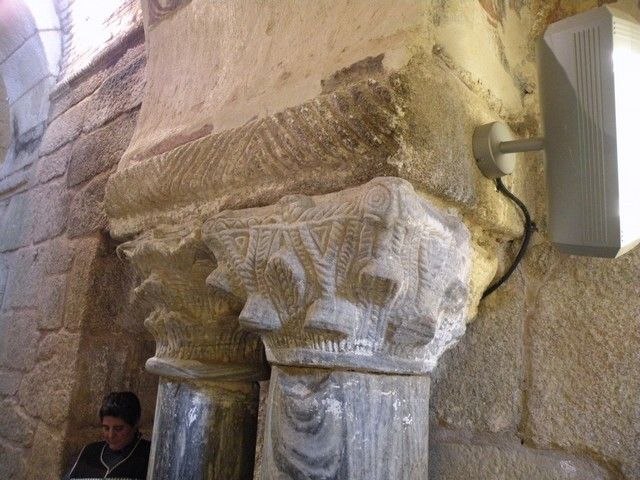
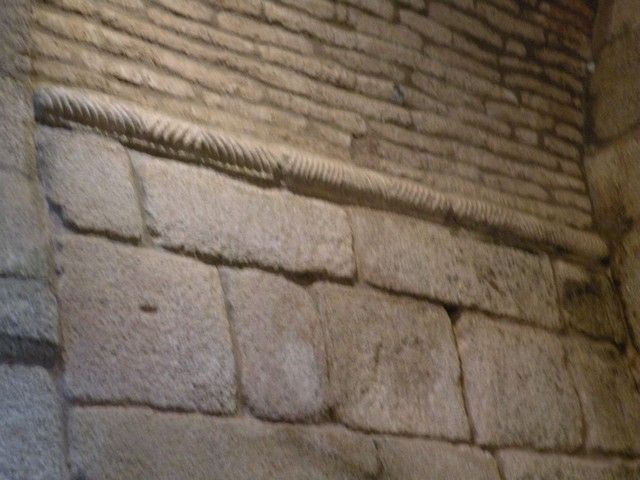
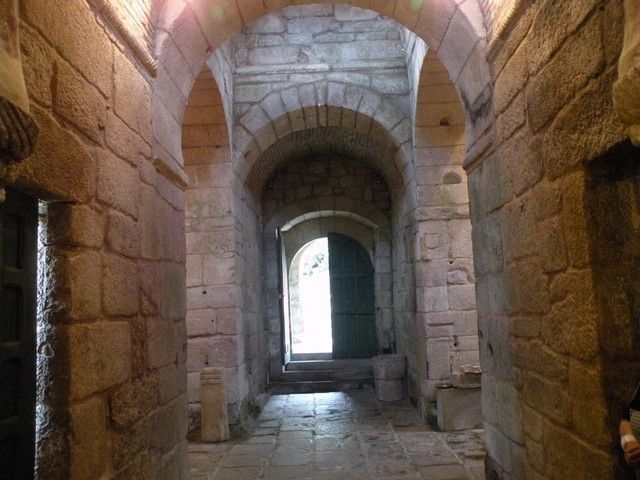

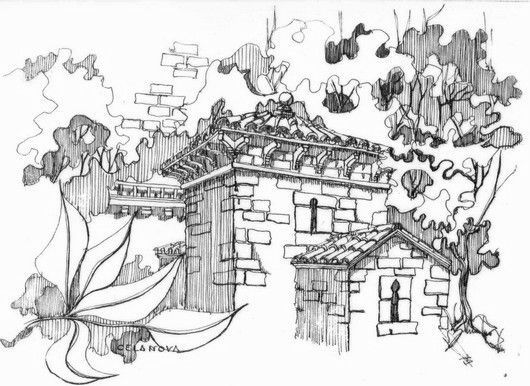



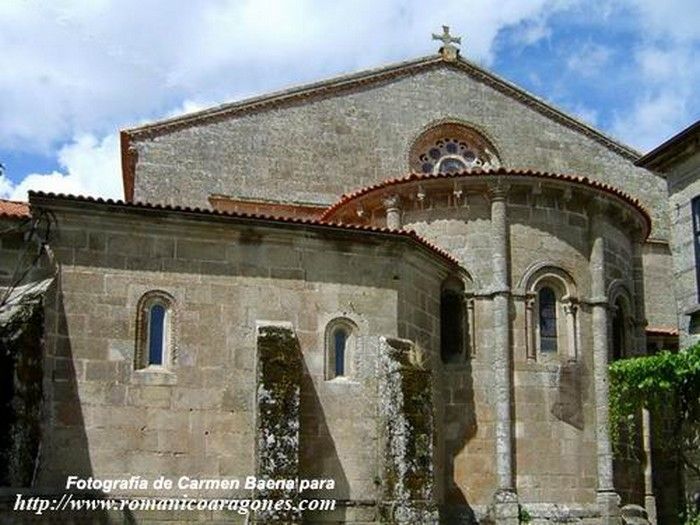


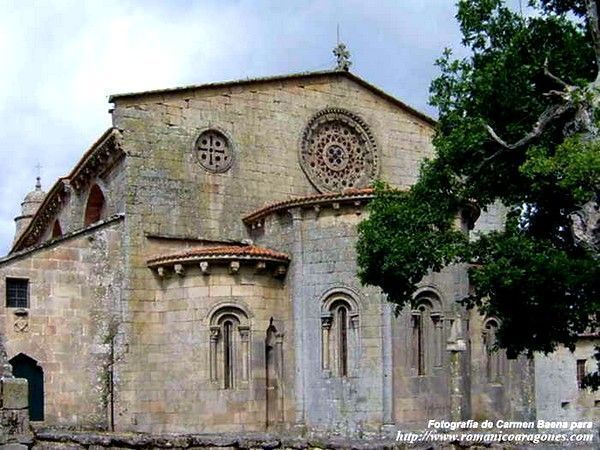

Santa Comba de Bande es una de las iglesias visigotícas mas hermosas e importantes que yo he visto. Desde USA hice un viaje con la intención de ver iglesias del siglo VñoII- VIII . Desde Comba fui a la iglesia de San Juan de
Baños .Igualmente impresionante, y desde allí a San Pedro de la Nave. Fue un viaje maravilloso, y mis estudiantes gringos apreciaron mis esfuerzos por traerles algo tan importante.
¡Qué pena que no viera San Fructuoso de Montelios, muy cerca de Santa Comba de Bande: https://www.turismo-prerromanico.com/monumento/san-fructuoso-de-montelios-20130219134810/